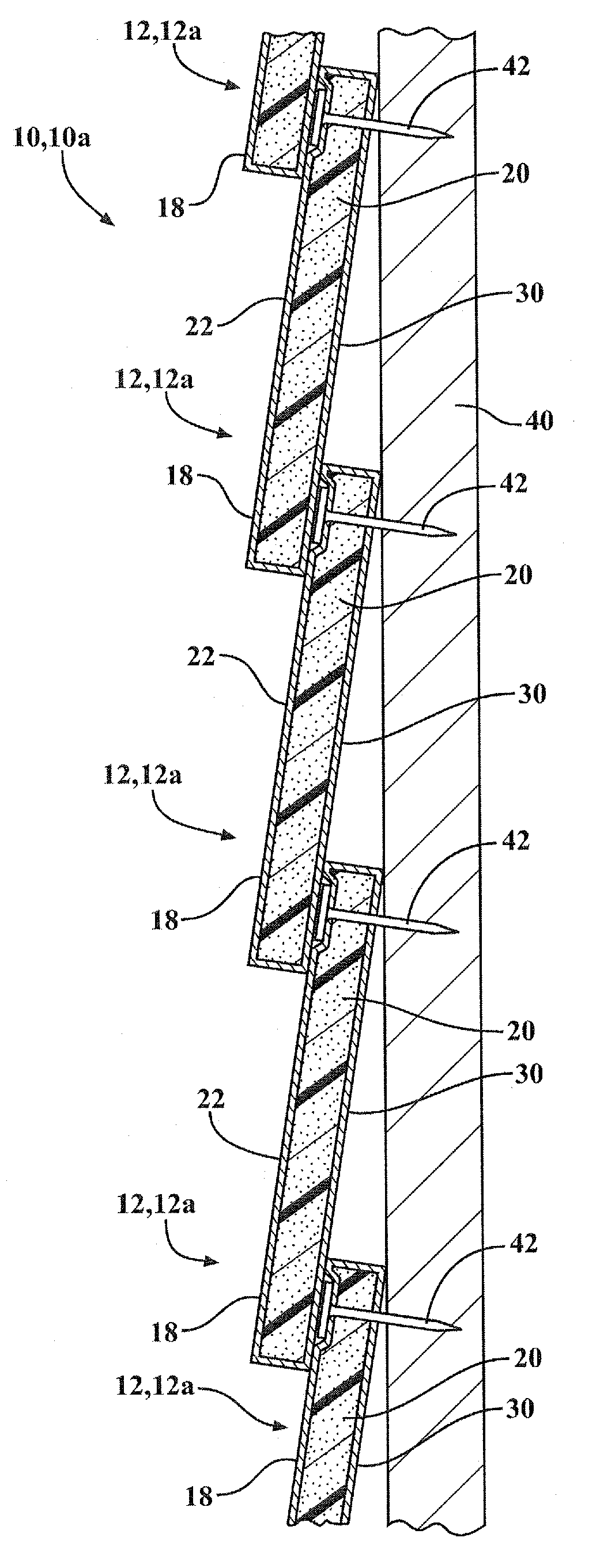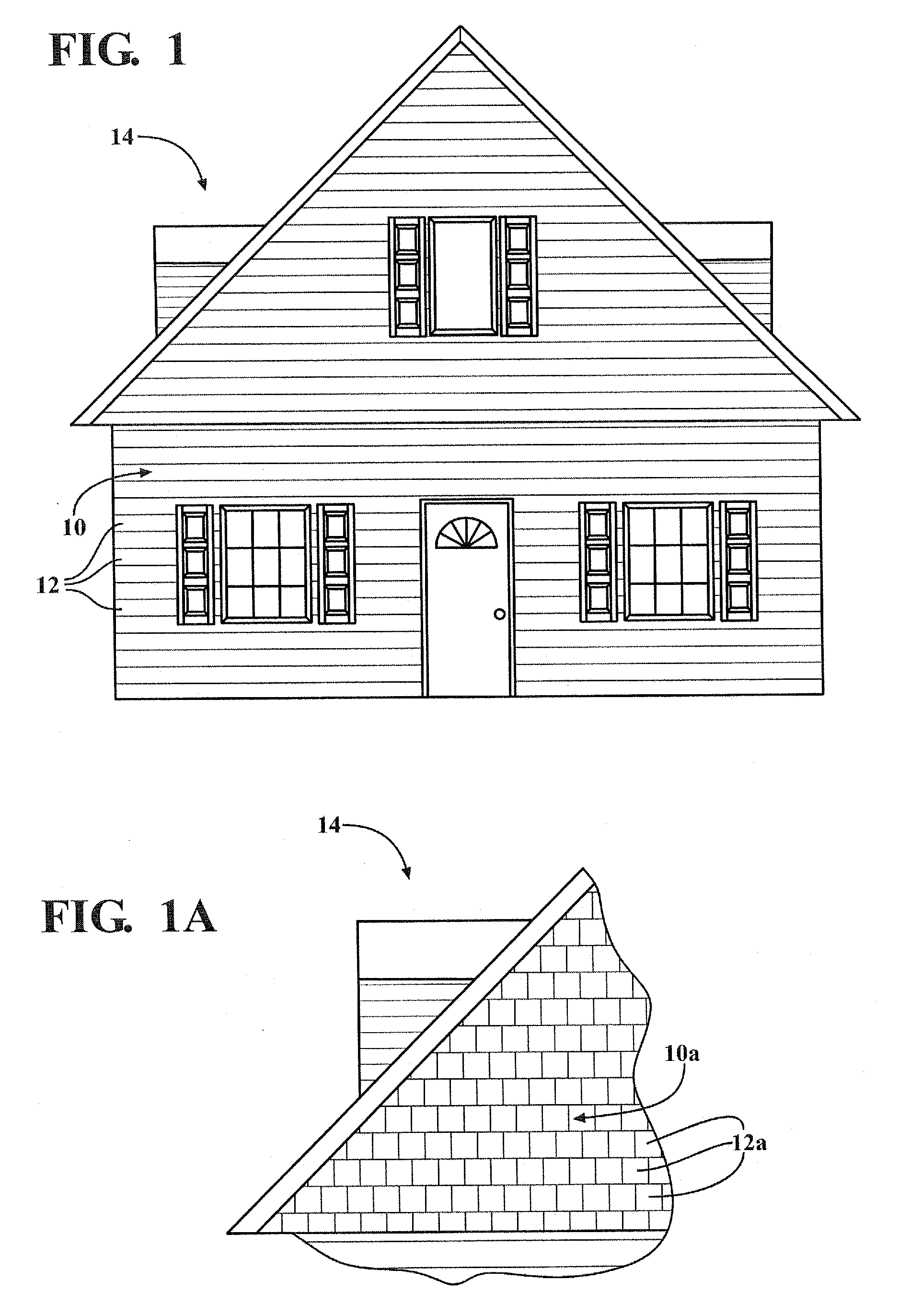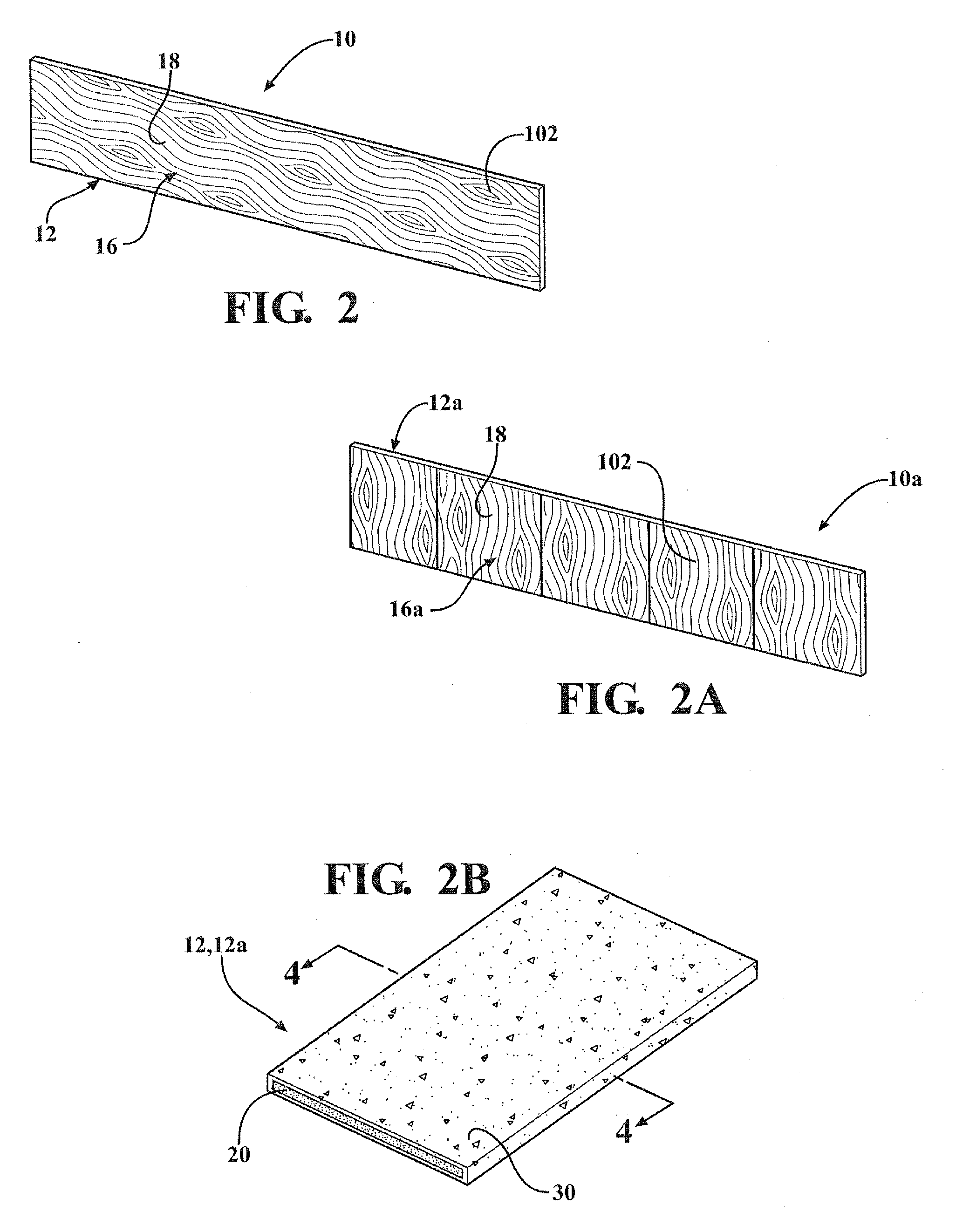Cementitious siding having encapsulated foam core, and system and method for making the same
- Summary
- Abstract
- Description
- Claims
- Application Information
AI Technical Summary
Benefits of technology
Problems solved by technology
Method used
Image
Examples
Embodiment Construction
[0073]The following description of the preferred embodiment(s) is merely exemplary in nature and is in no way intended to limit the invention, or its uses. It is to be noted that the Figures are not drawn to scale. In particular, the scale of some of the elements of the Figures is greatly exaggerated to emphasize characteristics of the elements. It is also noted that the Figures are not drawn to the same scale. Elements shown in more than one Figure that may be similarly configured have been indicated using the same reference numerals.
[0074]Referring to the Figures generally, and specifically to FIGS. 1 and 1A, a cementitious siding system is generally disclosed at 10 and 10a. By “system,” as that term is used herein, it is meant at least one siding member such as 12 or 12a, which may consist of one individually-formed siding member, two integrally formed siding members, and / or a plurality of integrally formed siding members, each siding member 12, 12a being substantially elongate a...
PUM
| Property | Measurement | Unit |
|---|---|---|
| Length | aaaaa | aaaaa |
| Thickness | aaaaa | aaaaa |
| Size | aaaaa | aaaaa |
Abstract
Description
Claims
Application Information
 Login to View More
Login to View More - R&D
- Intellectual Property
- Life Sciences
- Materials
- Tech Scout
- Unparalleled Data Quality
- Higher Quality Content
- 60% Fewer Hallucinations
Browse by: Latest US Patents, China's latest patents, Technical Efficacy Thesaurus, Application Domain, Technology Topic, Popular Technical Reports.
© 2025 PatSnap. All rights reserved.Legal|Privacy policy|Modern Slavery Act Transparency Statement|Sitemap|About US| Contact US: help@patsnap.com



